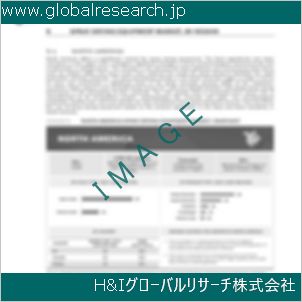Table of Contents
1 Industry Overview of Bromoethane
1.1 Definition and Specifications of Bromoethane
1.1.1 Definition of Bromoethane
1.1.2 Specifications of Bromoethane
1.2 Classification of Bromoethane
1.3 Applications of Bromoethane
1.3.1 Nuclear Application
1.3.2 Non-Nuclear Application
1.4 Industry Chain Structure of Bromoethane
1.5 Industry Overview and Major Regions Status of Bromoethane
1.5.1 Industry Overview of Bromoethane
1.5.2 Global Major Regions Status of Bromoethane
1.6 Industry Policy Analysis of Bromoethane
1.7 Industry News Analysis of Bromoethane
2 Manufacturing Cost Structure Analysis of Bromoethane
2.1 Raw Material Suppliers and Price Analysis of Bromoethane
2.2 Equipment Suppliers and Price Analysis of Bromoethane
2.3 Labor Cost Analysis of Bromoethane
2.4 Other Costs Analysis of Bromoethane
2.5 Manufacturing Cost Structure Analysis of Bromoethane
2.6 Manufacturing Process Analysis of Bromoethane
3 Technical Data and Manufacturing Plants Analysis of Bromoethane
3.1 Capacity and Commercial Production Date of Global Bromoethane Major Manufacturers in 2023
3.2 Manufacturing Plants Distribution of Global Bromoethane Major Manufacturers in 2023
3.3 R&D Status and Technology Source of Global Bromoethane Major Manufacturers in 2023
3.4 Raw Materials Sources Analysis of Global Bromoethane Major Manufacturers in 2023
4 Capacity, Production and Revenue Analysis of Bromoethane by Regions, Types and Manufacturers
4.1 Global Capacity, Production and Revenue of Bromoethane by Regions 2019-2024
4.2 Global and Major Regions Capacity, Production, Revenue and Growth Rate of Bromoethane 2019-2024
4.3 Global Capacity, Production and Revenue of Bromoethane by Types 2019-2024
4.4 Global Capacity, Production and Revenue of Bromoethane by Manufacturers 2019-2024
5 Price, Cost, Gross and Gross Margin Analysis of Bromoethane by Regions, Types and Manufacturers
5.1 Price, Cost, Gross and Gross Margin Analysis of Bromoethane by Regions 2019-2024
5.2 Price, Cost, Gross and Gross Margin Analysis of Bromoethane by Types 2019-2024
5.3 Price, Cost, Gross and Gross Margin Analysis of Bromoethane by Manufacturers 2019-2024
6 Consumption Volume, Consumption Value and Sale Price Analysis of Bromoethane by Regions, Types and Applications
6.1 Global Consumption Volume and Consumption Value of Bromoethane by Regions 2019-2024
6.2 Global and Major Regions Consumption Volume, Consumption Value and Growth Rate of Bromoethane 2019-2024
6.3 Global Consumption Volume and Consumption Value of Bromoethane by Types 2019-2024
6.4 Global Consumption Volume and Consumption Value of Bromoethane by Applications 2019-2024
6.5 Sale Price of Bromoethane by Regions 2019-2024
6.6 Sale Price of Bromoethane by Types 2019-2024
6.7 Sale Price of Bromoethane by Applications 2019-2024
6.8 Market Share Analysis of Bromoethane by Different Sale Price Levels
7 Supply, Import, Export and Consumption Analysis of Bromoethane
7.1 Supply, Consumption and Gap of Bromoethane 2019-2024
7.2 Global Capacity, Production, Price, Cost, Revenue, Supply, Import, Export and Consumption of Bromoethane 2019-2024
7.3 USA Capacity, Production, Price, Cost, Revenue, Supply, Import, Export and Consumption of Bromoethane 2019-2024
7.4 EU Capacity, Production, Price, Cost, Revenue, Supply, Import, Export and Consumption of Bromoethane 2019-2024
7.5 China Capacity, Production, Price, Cost, Revenue, Supply, Import, Export and Consumption of Bromoethane 2019-2024
7.6 Japan Capacity, Production, Price, Cost, Revenue, Supply, Import, Export and Consumption of Bromoethane 2019-2024
8 Major Manufacturers Analysis of Bromoethane
8.1 Manufacturer One
8.1.1 Company Profile
8.1.2 Product Picture and Specifications
8.1.2.1 Type I
8.1.2.2 Type II
8.1.2.3 Type III
8.1.3 Capacity, Production, Price, Cost, Gross and Revenue
8.1.4 Contact Information
8.2 Manufacturer Two
8.2.1 Company Profile
8.2.2 Product Picture and Specifications
8.2.2.1 Type I
8.2.2.2 Type II
8.2.2.3 Type III
8.2.3 Capacity, Production, Price, Cost, Gross and Revenue
8.2.4 Contact Information
8.3 Manufacturer Three
8.3.1 Company Profile
8.3.2 Product Picture and Specifications
8.3.2.1 Type I
8.3.2.2 Type II
8.3.2.3 Type III
8.3.3 Capacity, Production, Price, Cost, Gross and Revenue
8.3.4 Contact Information
8.4 Manufacturer Four
8.4.1 Company Profile
8.4.2 Product Picture and Specifications
8.4.2.1 Type I
8.4.2.2 Type II
8.4.2.3 Type III
8.4.3 Capacity, Production, Price, Cost, Gross and Revenue
8.4.4 Contact Information
8.5 Manufacturer Five
8.5.1 Company Profile
8.5.2 Product Picture and Specifications
8.5.2.1 Type I
8.5.2.2 Type II
8.5.2.3 Type III
8.5.3 Capacity, Production, Price, Cost, Gross and Revenue
8.5.4 Contact Information
…
9 Marketing Trader or Distributor Analysis of Bromoethane
9.1 Marketing Channels Status of Bromoethane
9.2 Traders or Distributors with Contact Information of Bromoethane by Regions
9.3 Ex-work Price, Channel Price and End Buyer Price Analysis of Bromoethane
9.4 Regional Import, Export and Trade Analysis of Bromoethane
10 Industry Chain Analysis of Bromoethane
10.1 Upstream Major Raw Materials Suppliers Analysis of Bromoethane
10.1.1 Major Raw Materials Suppliers with Contact Information Analysis of Bromoethane
10.1.2 Major Raw Materials Suppliers with Supply Volume Analysis of Bromoethane by Regions
10.2 Upstream Major Equipment Suppliers Analysis of Bromoethane
10.2.1 Major Equipment Suppliers with Contact Information Analysis of Bromoethane
10.2.2 Major Equipment Suppliers with Product Pictures Analysis of Bromoethane by Regions
10.3 Downstream Major Consumers Analysis of Bromoethane
10.3.1 Major Consumers with Contact Information Analysis of Bromoethane
10.3.2 Major Consumers with Consumption Volume Analysis of Bromoethane by Regions
10.4 Supply Chain Relationship Analysis of Bromoethane
11 Development Trend of Analysis of Bromoethane
11.1 Capacity, Production and Revenue Forecast of Bromoethane by Regions and Types
11.1.1 Global Capacity, Production and Revenue of Bromoethane by Regions 2024-2029
11.1.2 Global and Major Regions Capacity, Production, Revenue and Growth Rate of Bromoethane 2024-2029
11.1.3 Global Capacity, Production and Revenue of Bromoethane by Types 2024-2029
11.2 Consumption Volume and Consumption Value Forecast of Bromoethane by Regions, Types and Applications
11.2.1 Global Consumption Volume and Consumption Value of Bromoethane by Regions 2024-2029
11.2.2 Global and Major Regions Consumption Volume, Consumption Value and Growth Rate of Bromoethane 2024-2029
11.2.3 Global Consumption Volume and Consumption Value of Bromoethane by Types 2024-2029
11.2.4 Global Consumption Volume and Consumption Value of Bromoethane by Applications 2024-2029
11.3 Supply, Import, Export and Consumption Forecast of Bromoethane
11.3.1 Supply, Consumption and Gap of Bromoethane 2024-2029
11.3.2 Global Capacity, Production, Price, Cost, Revenue, Supply, Import, Export and Consumption of Bromoethane 2024-2029
11.3.3 USA Capacity, Production, Price, Cost, Revenue, Supply, Import, Export and Consumption of Bromoethane 2024-2029
11.3.4 EU Capacity, Production, Price, Cost, Revenue, Supply, Import, Export and Consumption of Bromoethane 2024-2029
11.3.5 China Capacity, Production, Price, Cost, Revenue, Supply, Import, Export and Consumption of Bromoethane 2024-2029
11.3.6 Japan Capacity, Production, Price, Cost, Revenue, Supply, Import, Export and Consumption of Bromoethane 2024-2029
12 New Project Investment Feasibility Analysis of Bromoethane
12.1 New Project SWOT Analysis of Bromoethane
12.2 New Project Investment Feasibility Analysis of Bromoethane
13 Conclusion of the Global Bromoethane (CAS 74-96-4) Industry 2024 Market Research Report
| ※参考情報 臭化エチル(Bromoethane)は、化学式C2H5Brで表される有機化合物であり、CAS番号は74-96-4です。この化合物は、エチル基(C2H5)に臭素原子(Br)が結合した構造を持ち、無色の揮発性液体として存在します。以下に、臭化エチルの定義、特徴、種類、用途、関連技術などについて詳しく述べていきます。 まず、臭化エチルの定義に関してですが、これはハロゲン化アルキルの一種であり、特にエチル基に臭素が結合した形をとっています。ハロゲン化アルキルは、炭素とハロゲン(フッ素、塩素、臭素、ヨウ素)との結合を持つ化合物で、一般的に反応性が高く、多岐にわたる化学反応において重要な役割を果たします。臭化エチルは、アルキル化反応やグリニャール試薬の前駆体として利用されるなど、さまざまな化学合成において重要な中間体です。 臭化エチルの特徴としては、まずその物理的性質が挙げられます。臭化エチルは、常温では無色透明の液体で、甘い香りを持つ特性があります。また、揮発性が高く、沸点は約38度 Celsiusであるため、常温でも蒸発しやすい特性を持っています。さらに、水に対しては極めて低い溶解度を示しますが、有機溶媒(エタノール、エーテルなど)にはよく溶ける性質を持っています。 臭化エチルの種類としては、主にその不純物や異性体(cis/trans異性体)によるバリエーションが存在しますが、工業的には一般的に純度の高い物質が使用されます。特に、臭化エチルの製造過程で生成される副産物の管理や処理が重要であり、これには良好な化学工学的手法が必要です。 用途に関しては、臭化エチルは非常に多岐にわたる分野で利用されています。まず、化学合成においては、アミンやアルコールとの反応を通じて多様な化合物を合成するための重要な出発物質となります。また、医薬品の原料や農薬、香料の合成にも利用されています。特に、臭化エチルは抗菌剤や殺虫剤の前駆体としても重要で、多くの農業関連製品に使用されています。 さらに、臭化エチルは冷媒としても使用されることがあります。特に、フロン制御が厳しくなったことにより、代替冷媒として臭化エチルが注目されています。このように、臭化エチルは医薬品、農薬、冷媒などさまざまな用途で利用されることから、その市場は広範囲にわたります。 関連技術に関しては、臭化エチルの合成や反応に関連するさまざまな技術が存在します。例えば、臭素とエチレンの反応による直接的な合成方法や、エチルアルコールと臭素化合物の反応を通じた間接的な合成方法があります。また、臭化エチルを用いた化学合成においては、特に有機合成反応(ウィグナー・ホフマン反応、ヒドロホルミル化など)が活用されます。 臭化エチルの安全性についても重要な側面です。この物質は刺激性があり、皮膚や呼吸器を刺激する可能性があるため、取り扱いには注意が必要です。また、臭化エチルは揮発性が高いため、適切な換気や保護具の着用が推奨されます。これに加え、長期的な影響に関する検討も進められており、環境への影響を最小限に抑える方策が求められています。 総じて、臭化エチルはその化学的特性や多様な用途から、化学工業や農業分野において重要な役割を果たしている化合物です。最新の技術進歩や規制に応じた利用方法の見直しも行われており、その安全性や環境への影響を考慮した利用が求められています。今後も、臭化エチルの研究や新たな応用が期待される分野となるでしょう。 |
❖ 免責事項 ❖
http://www.globalresearch.jp/disclaimer












